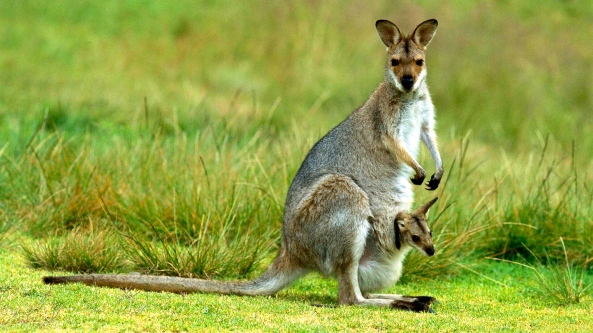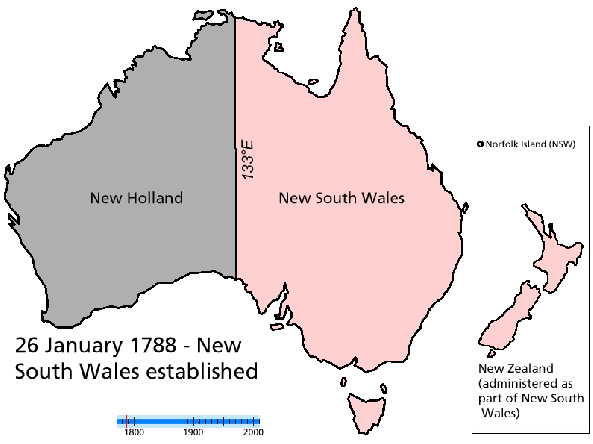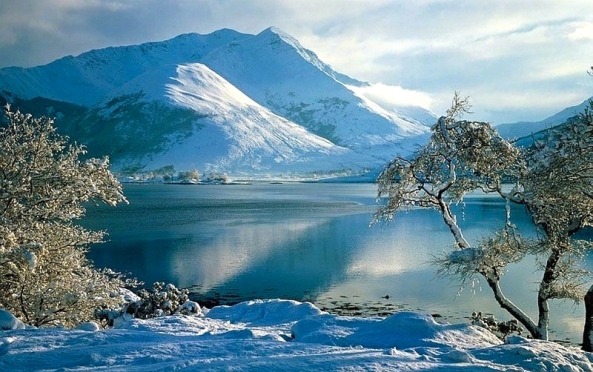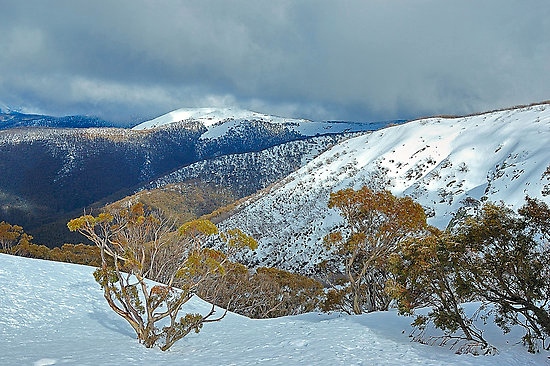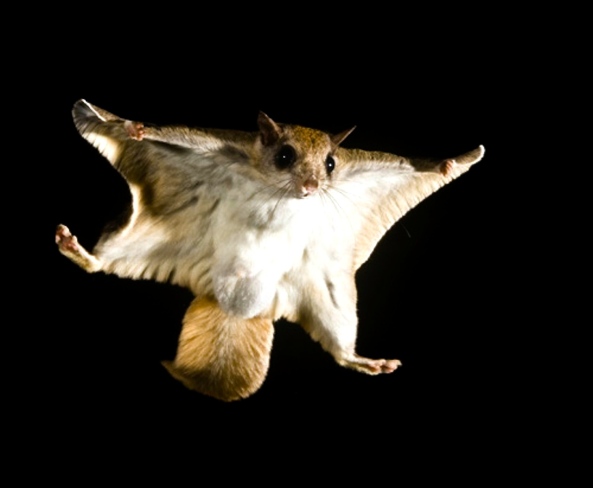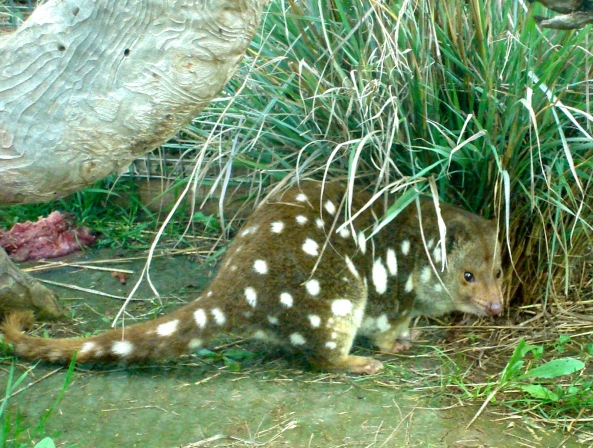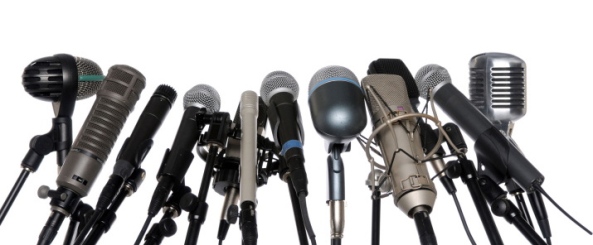WHY OZ? BECOZ…
Fellow Canadians, I truly love this land we live in, every inch of it, but darn it, sometimes you just have to turn your back on Old Man Winter and go to sunnier climes for a spell! So today I’m choosing to go to Oz for my spring break. Well, not physically of course, but mentally I’m already packing my bags to travel across the ocean to visit a place I’ve always loved in my heart – Australia. Australia has 6 states (New South Wales, Victoria, South Australia, Western Australia, Queensland, Tasmania) and 2 territories (Australian Capital Territory, Northern Territory). Here is a quick chronological history of when they became part of Australia (from Wikipedia). It appears the states are also referred to as provinces. Confused? Me too.
The cities and more populated areas of Australia are covered so extensively, I decided that, as a mental tourist, I would concentrate on two areas – one, the town of Collie and its surroundings (South West Region of Western Australia) and The Snowy Mountains Region (South East Region of New South Wales). Collie, because I have a personal interest there, and The Snowy Mountains Region because I don’t normally equate Australia with snow.
First, to the town of Collie, Western Australia – a little off the beaten track.
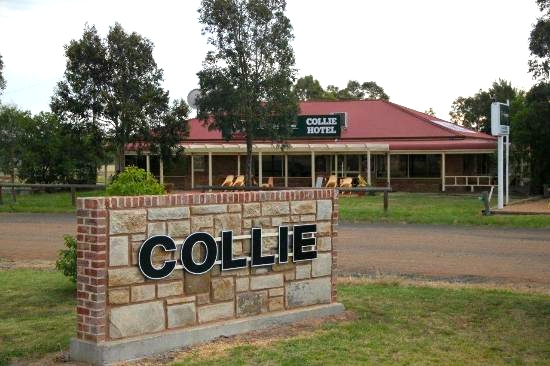 I am personally interested in Australia because part of my family history, on my father’s side, is there. It is with a little town called Collie (pop. around 7000) in the South West region of Western Australia, south of Perth and just inland from Bunbury, near the junction of the Collie and Harris Rivers. The town and the river were named after Dr. Alexander Collie, a Scottish surgeon and botanist, who along with William Preston, were the first Europeans to explore the area in 1829. Alexander Collie (Royal Navy) was aboard the HMS Sulphur at the time he explored the area and discovered the river. There is a memorial to Dr. Collie on the lawns of Forrest Street.
I am personally interested in Australia because part of my family history, on my father’s side, is there. It is with a little town called Collie (pop. around 7000) in the South West region of Western Australia, south of Perth and just inland from Bunbury, near the junction of the Collie and Harris Rivers. The town and the river were named after Dr. Alexander Collie, a Scottish surgeon and botanist, who along with William Preston, were the first Europeans to explore the area in 1829. Alexander Collie (Royal Navy) was aboard the HMS Sulphur at the time he explored the area and discovered the river. There is a memorial to Dr. Collie on the lawns of Forrest Street.
 Collie was formally declared a townsite in 1896 and grew to become an important Western Australia town supplying the State with Collie coal.
Collie was formally declared a townsite in 1896 and grew to become an important Western Australia town supplying the State with Collie coal.
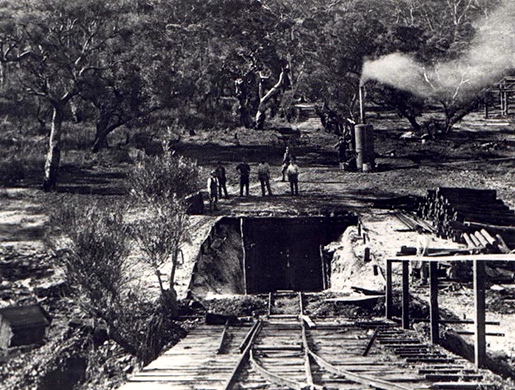 This is a photo of “The First Shaft” at the Collie Mine, circa 1880. The town was once referred to as a “dirty mining town” but in 2006 it won the Australian Tidy Towns Competition from finalists from six States and the Northern Territory for its beautification and community projects. For a small place, there’s lots to do and see.
This is a photo of “The First Shaft” at the Collie Mine, circa 1880. The town was once referred to as a “dirty mining town” but in 2006 it won the Australian Tidy Towns Competition from finalists from six States and the Northern Territory for its beautification and community projects. For a small place, there’s lots to do and see.
 A walk down Collie’s main street, Throssel Street, lined with historic hotel buildings.
A walk down Collie’s main street, Throssel Street, lined with historic hotel buildings.
 Honeymoon Pool is a small, quiet camping ground near Collie, on the Collie River.
Honeymoon Pool is a small, quiet camping ground near Collie, on the Collie River.
 The Wellington Dam Hydro Power Station is one of two in Western Australia, constructed in 1933, enlarged in 1956, upgraded 2010, the largest in the South West, second largest in Western Australia, fed by the Collie River. The Bibbulmun Track is one of the world’s great long distance walk trails, stretching nearly 1000km from Kalamunda on the outskirts of Perth, to the town of Albany on the south coast.
The Wellington Dam Hydro Power Station is one of two in Western Australia, constructed in 1933, enlarged in 1956, upgraded 2010, the largest in the South West, second largest in Western Australia, fed by the Collie River. The Bibbulmun Track is one of the world’s great long distance walk trails, stretching nearly 1000km from Kalamunda on the outskirts of Perth, to the town of Albany on the south coast.
 The Track is for walkers only with yellow triangular markers symbolizing the “Waugal”, the rainbow serpent of the Aboriginal Dreaming.
The Track is for walkers only with yellow triangular markers symbolizing the “Waugal”, the rainbow serpent of the Aboriginal Dreaming.
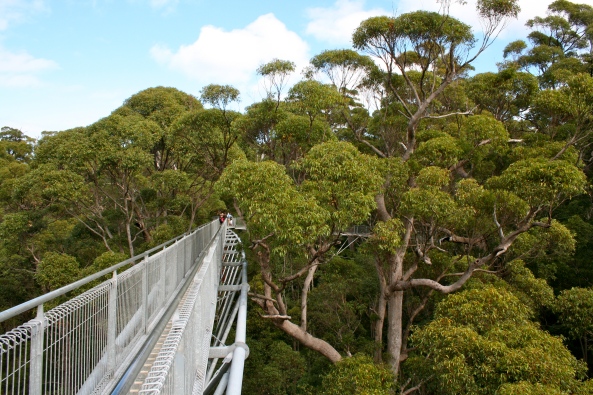 Walkers go through towering Karri and Tingle forests, down mist-shrouded valleys, over giant granite boulders, and along breathtaking coastal heathlands – an epic 8 week adventure, or a gentle stroll, your choice.
Walkers go through towering Karri and Tingle forests, down mist-shrouded valleys, over giant granite boulders, and along breathtaking coastal heathlands – an epic 8 week adventure, or a gentle stroll, your choice.
 This is a fire lookout station built in a Karri Tree along the trail.
This is a fire lookout station built in a Karri Tree along the trail.
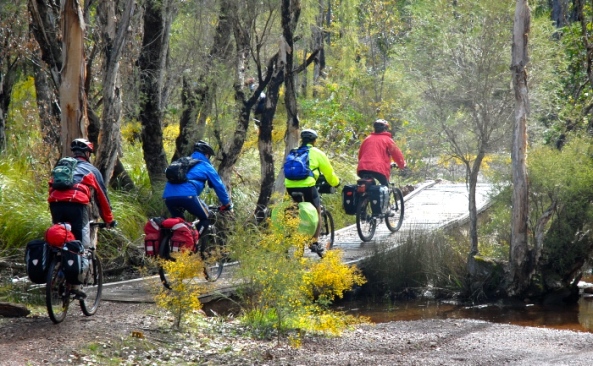 Or if you prefer cycling, take the Munda Biddi Trail, a world-class off-road cycling trail, running for over 1000 km from Mundaring to Albany, the longest track of its kind in the world. The name means “path through the forest” in the Noongar Aboriginal language, and the trail itself was built through an undeveloped natural corridor, with areas of unspoiled forests and bushland, gentle terrain, and year-round cycling weather.
Or if you prefer cycling, take the Munda Biddi Trail, a world-class off-road cycling trail, running for over 1000 km from Mundaring to Albany, the longest track of its kind in the world. The name means “path through the forest” in the Noongar Aboriginal language, and the trail itself was built through an undeveloped natural corridor, with areas of unspoiled forests and bushland, gentle terrain, and year-round cycling weather.
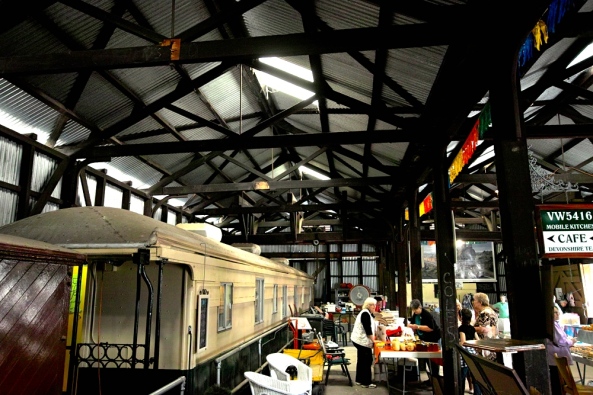 Visit the Markets of the Old Collie Goods Shed, built in 1898, for a newly restored collection of train carriages, yesteryear information, book exchange, fruit and vegetables, cakes, crafts, plants, sausage sizzle, and even sheep manure, if you need it (with thanks to Andy Graham on Flickr for sharing)
Visit the Markets of the Old Collie Goods Shed, built in 1898, for a newly restored collection of train carriages, yesteryear information, book exchange, fruit and vegetables, cakes, crafts, plants, sausage sizzle, and even sheep manure, if you need it (with thanks to Andy Graham on Flickr for sharing)
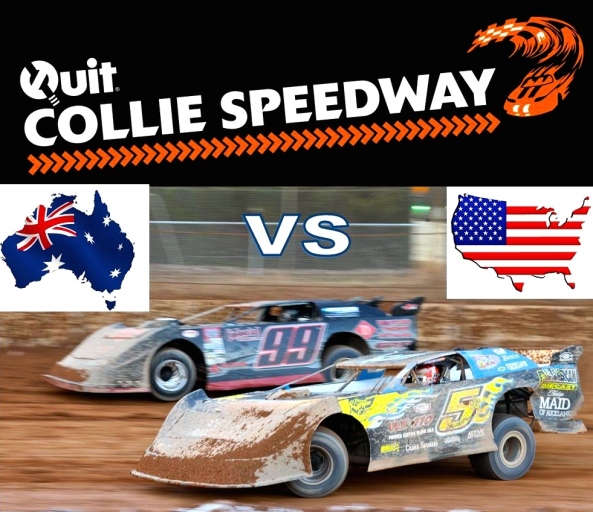 For some thrills, you can visit the Quit Collie Speedway where you can “come see WA’s Best take on America’s Best” in late model racing… or the Coal Miners Cup, etc. Or at the Collie Motorplex, there are historic bike events, speed events, where they aim to promote motorsport, and a safe environment for Car Clubs and testing, — and a $15,000 cash Collie Burnout Challenge in March. Or a Music Festival, A Club Poker Night, Social Badminton, Barbecues, Tom Lowry Memorial Cycle Race in May, or sporting clubs – hockey, badminton, basketball, bowling, cricket, cycle, football, horse and pony, darts, motor sports, motorcycle, netball, BMX, Soccer, Volleyball, Tennis, Western Riding, Motoring…all in a town of around 7000!
For some thrills, you can visit the Quit Collie Speedway where you can “come see WA’s Best take on America’s Best” in late model racing… or the Coal Miners Cup, etc. Or at the Collie Motorplex, there are historic bike events, speed events, where they aim to promote motorsport, and a safe environment for Car Clubs and testing, — and a $15,000 cash Collie Burnout Challenge in March. Or a Music Festival, A Club Poker Night, Social Badminton, Barbecues, Tom Lowry Memorial Cycle Race in May, or sporting clubs – hockey, badminton, basketball, bowling, cricket, cycle, football, horse and pony, darts, motor sports, motorcycle, netball, BMX, Soccer, Volleyball, Tennis, Western Riding, Motoring…all in a town of around 7000!
 You can go bush camping at Glen Mervyn Dam, Stockton Lake or Wellington National Park,
You can go bush camping at Glen Mervyn Dam, Stockton Lake or Wellington National Park,  or go fishing for perch, trout, redfin and marron along the Collie River, the shores of Wellington Dam and Glen Mervyn Dam.
or go fishing for perch, trout, redfin and marron along the Collie River, the shores of Wellington Dam and Glen Mervyn Dam.  If you like canoeing, try Minninup Pool or the upper reaches of the Collie river.
If you like canoeing, try Minninup Pool or the upper reaches of the Collie river.  For white water rafting, go below the wall of the Wellington Dam.
For white water rafting, go below the wall of the Wellington Dam.
Small Worlds: a personal story
On another note, in the past, whenever I met Australians here in Canada or in the U.S., I would ask them as a point of personal interest, whether they knew the town of Collie. Invariably, I got a puzzled look and a ‘no’ answer. But, one magical day (yes, I believe there are such days), I was visiting the Eaton Centre in downtown Toronto, and was awed at a window display of critters I believed I’d never seen before. It was full of animals and birds and other enchanting creatures. I became aware that a man and woman were watching me, facings beaming. “We’re from Australia,” the man said, “and so are they” (indicating the display). When they found out I was unfamiliar with any in the display, he and his wife began to name the exhibits and tell me about them. I found myself really enjoying their company, and asked if they would like to join me for a cup of coffee, which they did, and where we passed a very pleasant couple of hours together. They told me they were on a six-month tour of Canada, and he explained that he was “in law” (I still don’t know for sure what that means) and they said they were thoroughly enjoying themselves. They asked me questions about Toronto, and other parts of Ontario, and about myself and my husband and family, and I confess I answered more questions than I asked. Time with them passed quickly, but I had an appointment to keep, and pardoned myself for having to break off the great afternoon I was having with them. The following day I was heading for a two-week vacation and wouldn’t be able to accept their invitation to dinner, so we exchanged mailing addresses and telephone numbers. Almost as an after-thought, as I was turning to go, I said “Have you ever heard of the town of Collie?” To my surprise and delight, he said to me “Heard of it? I go through there at least twice a week! It’s a lovely place.” So I lingered a few minutes more, and he and his wife issued me and my husband an invitation to visit them if we could. He said “Come in October – it’s spring then, and I can take you on a photography trip you’ll never forget.” I thanked them profusely, and we said our goodbyes. Regrettably, we never did get to visit them, and I often really wish we had. I really do.
THE SNOWY MOUNTAINS REGION
Here’s a short video giving you an wonderful overview of the Snowy Mountains (with thanks to pleasetakemeto on YouTube)
Dawn and Sunrise In The Snowy Mountains
A few tin strips of fleecy cloud lies long And motionless above the easter steeps, Like shreds of silver lace: till suddenly, Out from the flushing centre to the ends On either hand, their lustrous layers become Dipt in all crimson streaked with pink and gold; And then, at last, are edged as with a band Of crystal fire.
(Charles Harpur)
 The Snowy Mountains region in the south-east of New South Wales is an Australian treasure. For more than 20,000 years, this was home to a number of Aboriginal groups with a unique way of life. The coming of summer each year saw the arrival of large numbers of Aboriginal groups for a time of feasting and ceremonies in the high country.
The Snowy Mountains region in the south-east of New South Wales is an Australian treasure. For more than 20,000 years, this was home to a number of Aboriginal groups with a unique way of life. The coming of summer each year saw the arrival of large numbers of Aboriginal groups for a time of feasting and ceremonies in the high country.
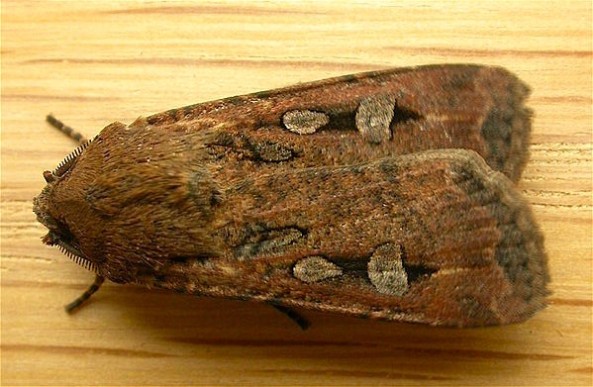 This coincided with the migration of the bogong moth from southern Queensland to the region, the moths being collected and cooked in hot ash, for a very nutritious meal.
This coincided with the migration of the bogong moth from southern Queensland to the region, the moths being collected and cooked in hot ash, for a very nutritious meal. 
The high country was first settled in earnest by European stockmen, graziers and landholders in the early 1800s. Andrew Barton “Banjo” Paterson, an Australian bush poet, journalist and author shown in the Ten Dollar note above, immortalized these settlers in his famous poem:
‘The Man From Snowy River’
(last verse): And down by Kosciusko, where the pine-clad ridges raise Their torn and rugged battlements on high, Where the air is clear as crystal, and the white stars fairly blaze At midnight in the cold and frosty sky, And where around The Overflow the reed beds sweep and sway To the breezes, and the rolling plains are wide, The man from Snowy River is a household word today, And the stockmen tell the story of his ride.
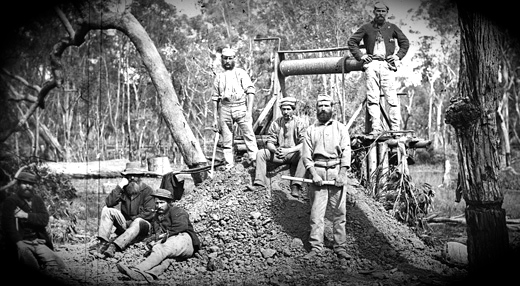 In the 1860s thousands of people from across Australia, Europe and Asia flocked to the gold rush town of Kiandra, seeking wealth. Edward Hammond Hargraves is credited with finding the first payable goldfields at Ophir, near Bathurst, New South Wales, on 12 February 1851. News of gold spread quickly around the world and in 1852 alone, 370,000 immigrants arrived in Australia. By 1871, the national population had trebled to 1.7million. The last mining operations finally ceased around 1905. Official total production recorded was 48 676 kg. The last resident left Kiandra in 1974, after which the National Parks and Wildlife Service (NSW) took over the town. The area is being restored, with guided tours and lodge accommodations available and still attracts many tourists. (Picture: 1875, small Gulgong mine-NSW Gov)
In the 1860s thousands of people from across Australia, Europe and Asia flocked to the gold rush town of Kiandra, seeking wealth. Edward Hammond Hargraves is credited with finding the first payable goldfields at Ophir, near Bathurst, New South Wales, on 12 February 1851. News of gold spread quickly around the world and in 1852 alone, 370,000 immigrants arrived in Australia. By 1871, the national population had trebled to 1.7million. The last mining operations finally ceased around 1905. Official total production recorded was 48 676 kg. The last resident left Kiandra in 1974, after which the National Parks and Wildlife Service (NSW) took over the town. The area is being restored, with guided tours and lodge accommodations available and still attracts many tourists. (Picture: 1875, small Gulgong mine-NSW Gov)  Skiing as a sport first appeared in Australia at Kiandra in 1861, originally called ‘snow shoeing’ and later ‘ski running’, allowing residents to maintain contact with the outside world when roads were closed by heavy snows. Ski races were held annually on Township Hill at Kiandra where the World’s first Alpine ski club was founded, The Kiandra Snow Shoe Club, with Banjo Paterson holding the position of Vice President at one time.
Skiing as a sport first appeared in Australia at Kiandra in 1861, originally called ‘snow shoeing’ and later ‘ski running’, allowing residents to maintain contact with the outside world when roads were closed by heavy snows. Ski races were held annually on Township Hill at Kiandra where the World’s first Alpine ski club was founded, The Kiandra Snow Shoe Club, with Banjo Paterson holding the position of Vice President at one time.  The water of the Snowy River and some of its tributaries, is captured at high elevations and diverted inland to the Murray River and the Murrumbidgee River, through two tunnel systems driven through the Snowy Mountains. The Snowy Mountains Hydro-Electricity Scheme was launched in 1949, and today provides power to three states. It consists of nine hydro-electric power stations and sixteen large dams connected by 145 kilometres (90 mi) of tunnels and 80 kilometres (50 mi) of aqueducts located mainly in the Kosciuszko National Park
The water of the Snowy River and some of its tributaries, is captured at high elevations and diverted inland to the Murray River and the Murrumbidgee River, through two tunnel systems driven through the Snowy Mountains. The Snowy Mountains Hydro-Electricity Scheme was launched in 1949, and today provides power to three states. It consists of nine hydro-electric power stations and sixteen large dams connected by 145 kilometres (90 mi) of tunnels and 80 kilometres (50 mi) of aqueducts located mainly in the Kosciuszko National Park  This is the highest point in Australia’s Great Dividing Range, with Mount Kosciuszko the highest peak on the Australian mainland at 2,228m, with 30,000 making the trek to the top annually.
This is the highest point in Australia’s Great Dividing Range, with Mount Kosciuszko the highest peak on the Australian mainland at 2,228m, with 30,000 making the trek to the top annually.  This area was the only part of mainland Australia to be covered by glaciers during the most recent ice age. They gouged 13 enormous cirques, four of which are deep enough to be permanently filled with water, and these are known as glacial lakes.
This area was the only part of mainland Australia to be covered by glaciers during the most recent ice age. They gouged 13 enormous cirques, four of which are deep enough to be permanently filled with water, and these are known as glacial lakes.  The flat expanse of the Monaro High Plain to the east of the region is sheep country renowned for the quality of its Merino wool. The Snowy Mountains Region is a significant tourism destination that attracts huge numbers of visitors each year (around 3 million) for recreation and relaxation activities and to explore the rich history and landscape year round. It has distinct seasons of fresh summer air and winter snow across an expansive mountain landscape. (Average temperatures from minus 6 degrees Celsius in July, and 21 degrees Celsius in January.) It is one of the few regions that experiences four distinct seasons. The population of the Snowy Mountains region is approximately 34,500. Major events and festivals fill the region each year. You can even catch a sheep sale or a quaint country show. It’s a perfect base for a natural adventure or to enjoy activities in a spectacular mountain environment.
The flat expanse of the Monaro High Plain to the east of the region is sheep country renowned for the quality of its Merino wool. The Snowy Mountains Region is a significant tourism destination that attracts huge numbers of visitors each year (around 3 million) for recreation and relaxation activities and to explore the rich history and landscape year round. It has distinct seasons of fresh summer air and winter snow across an expansive mountain landscape. (Average temperatures from minus 6 degrees Celsius in July, and 21 degrees Celsius in January.) It is one of the few regions that experiences four distinct seasons. The population of the Snowy Mountains region is approximately 34,500. Major events and festivals fill the region each year. You can even catch a sheep sale or a quaint country show. It’s a perfect base for a natural adventure or to enjoy activities in a spectacular mountain environment. 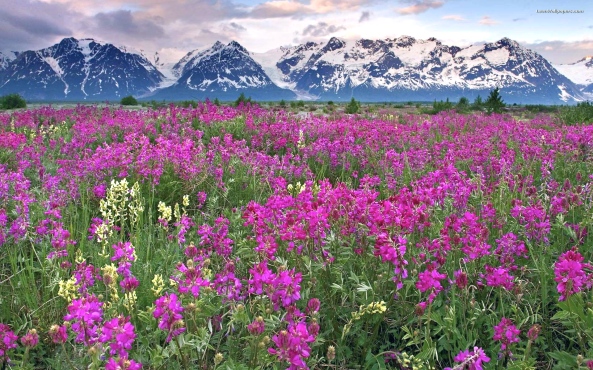 During summer, colourful wild flowers carpet the area in white, yellow, purple and orange, while in the winter there is a landscape blanketed by snow. Most plants are long lived perennials, able to winter-over under the snow;
During summer, colourful wild flowers carpet the area in white, yellow, purple and orange, while in the winter there is a landscape blanketed by snow. Most plants are long lived perennials, able to winter-over under the snow;  Snow Gums, for one, with their low, broad branches able to bend under the weight of winter snow. Most people are aware of Australia’s famous kangaroos and koala bears, so I thought I would show you some of their lesser known critters.
Snow Gums, for one, with their low, broad branches able to bend under the weight of winter snow. Most people are aware of Australia’s famous kangaroos and koala bears, so I thought I would show you some of their lesser known critters.  There are wallabies in bushland,
There are wallabies in bushland,  wombats ambling across the slopes,
wombats ambling across the slopes,
 possums and
possums and  platypus in the streams. Most animals in the mountains are elusive, many hibernate for months of the year, but if you are quiet and remain vigilant, you may spot a
platypus in the streams. Most animals in the mountains are elusive, many hibernate for months of the year, but if you are quiet and remain vigilant, you may spot a
 pygmy possum, a mouse-size animal believed to be extinct until discovered in 1966.
pygmy possum, a mouse-size animal believed to be extinct until discovered in 1966.
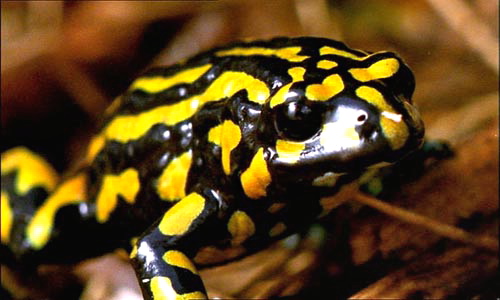 Among the more colourful species of the area are the endangered yellow and black corroboree frog,
Among the more colourful species of the area are the endangered yellow and black corroboree frog,
 and the Red Chested Flame Robin
and the Red Chested Flame Robin
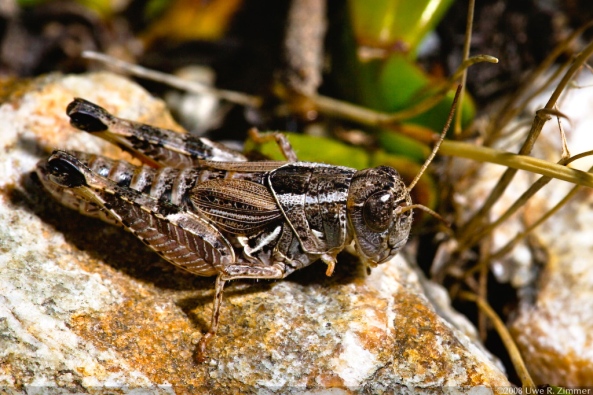 The wingless grasshopper is well camouflaged with intricate design.
The wingless grasshopper is well camouflaged with intricate design. 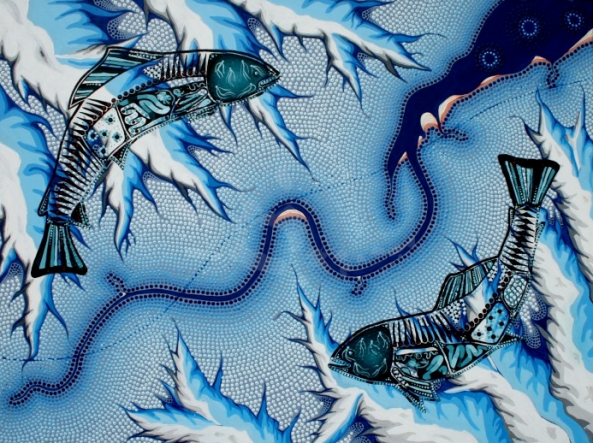 Brown and rainbow trout were introduced to the fast flowing streams of the “Snowies” in the late 19th centre, and have prospered. This is a fantastic representation of the rainbow trout as imagined by Danielle Burford, Indigenous contemporary artist from NSW, Australia. Please visit her site if you would like to see more of her beautiful artwork.
Brown and rainbow trout were introduced to the fast flowing streams of the “Snowies” in the late 19th centre, and have prospered. This is a fantastic representation of the rainbow trout as imagined by Danielle Burford, Indigenous contemporary artist from NSW, Australia. Please visit her site if you would like to see more of her beautiful artwork. 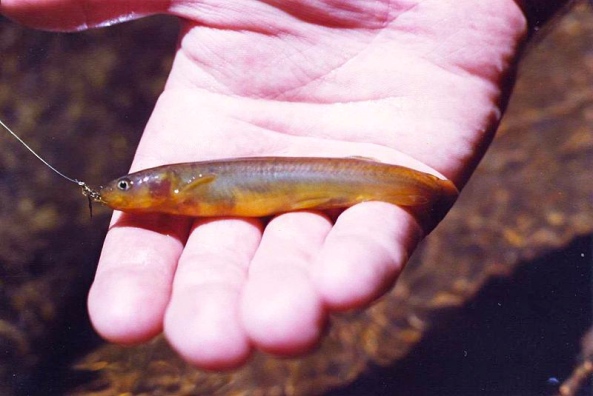 The mountain galaxia is a native fish averaging bout 13cm in length, surviving in the smaller streams above the treeline through its ability to jump out of the water and clamber up steep rocks and waterfalls. There are bogs and fens filling high country valleys and hollows. These wetlands act like sponges, retaining water from rain and melting snow. This prevents erosion and keeps the slopes moist. Some alpine peat bogs are metres deep and contain plant matter 15,000 years old, giving scientists valuable information about climate change over the years.
The mountain galaxia is a native fish averaging bout 13cm in length, surviving in the smaller streams above the treeline through its ability to jump out of the water and clamber up steep rocks and waterfalls. There are bogs and fens filling high country valleys and hollows. These wetlands act like sponges, retaining water from rain and melting snow. This prevents erosion and keeps the slopes moist. Some alpine peat bogs are metres deep and contain plant matter 15,000 years old, giving scientists valuable information about climate change over the years.
WHO ARE THESE FOLKS, ANYWAY?
Aussies: What they say about themselves:
- They who came here in chains, who were lashed while they worked in convict gangs at Port Arthur. They who like many others were driven through starvation or oppression from their home-lands to the shores of this new country, Australia. They, who for a multitude of reasons that hopefully, I or my children will never witness or experience, decided not to harbour grudges or discontent but rather to look to the future. They who embraced this country as their own and said; “let’s get on with it, this is a new land, this is our home. (Dennis O’Keefe, musician)
- Australians are coffee snobs. An influx of Italian immigrants after World War Ii ensured that – we probably had the word ‘cappuccino’ about 20 years before America. (Hugh Jackman, actor and producer)
- As Australians, we see the law as inherently bad. We have a real inherent distaste for authority in our makeup. (Nick Cave, musician, author, actor)
- Australians are a passionate lot. We are also a very practical lot. (Kevin Rudd former Prime Minister of Australia)
- With Australians we’re saying we’re going to win before we start playing and pretty much keep on saying that. (Shane Warne, cricketer)
- I’m definitely attracted to other Australians; I have a laid-back attitude to life that I feel is very Australian; I love a good barbie. (Isla Fisher, Scottish-Australian actress)
- Never complain, never explain. (Kerry Packer media tycoon – personal motto)
- Winning needs no explanation, losing has no alibi. (Greg Baum, sports journalist)
- It’s dead easy to die; it’s the keeping on living that’s hard. (Sir Douglas Mawson, geologist, Antactic explorer, academic)
- Australians do well here because we feel a bit naughty, like we’re in America and if they only knew how much fun we were having, we’d all get thrown out, you know. (Melissa George, film and t.v. actress)
- We are quite self-deprecating, we’re light-hearted and can have a laugh. (Teresa Palmer, actress)
- I like Australians and I can’t believe that they’re going to go to hell because they tell a good dirty joke. (Thomas Keneally, novelist, playwright, author)
- Australians are pretty blunt and we say things how they really are. (Charlie Bell, business executive)
- Australians have a free spirit and an ability to think outside the box, and that is why I like Australia so much. (Brian Schmidt, Distinguished Professor, astrophysicist)
- With Aussies, we just get it. We don’t take each other too seriously, which is a relief. (Bella Heathcote, actress)
- You put any 12 blokes together and you’ll get a job done. (Matthew Hayden, cricket player)
Broad-Brush Australian Observations:
- The bigger the hat, the smaller the property. (Australian proverb)
- If the guy next to you is swearing like a wharfie he’s probably a billionaire. Or just conceivably, a wharfie. (Australian observation)
- Those who lose dreaming are lost. (Australian Aboriginal proverb)
- If you go out for a big night and by some misadventure you end up in a prison cell, you can count on your best friend to bail you out, but your best mate will be in there beside you. (Australian observation)
- A queer country, so old that as you walk on and on, there’s a feeling comes over you that you are gone back to Genesis. (Australian bushman)
- Australia’s culture has always been characterized by someone trying to make rules to live by, and someone else trying to break them. (author unknown)
What Others Say About Them:
- What’s fascinating about the Australians is they have this quality that they are impervious to majesty. They’re not awed. (Tom Hooper, British film and TV director)
- Probably Australians have just a little more taste than most people. (Neil Diamond, American singer-songwriter)
- Australians like a bit of vulgarity. (Julian Clary, British comedian)
- In many traditions, the world was sung into being: Aboriginal Australians believe their ancestors did so. (Jay Griffiths, British writer)
- Australians don’t really care that much about celebrities or things like that. (Brody Jenner, American t.v. personality, model)
- Australians are geniuses with a good sense of humour (Fred Schneider, American vocalist (B-52’s rock band)
What’s That You Say?
(I’ve been studying Ozziespeak so that when I go there I’ll have an idea of what they’re saying) First I put on my my grundies, then my togs, and trackies topped by a Bluey, packed my Sunnies and a jumper. Took my swag, just in case we went back of beyond, then got in the Ute. Stopped by the bottle-o to get my grog, so I could hit the turps with my mates, a digger, a jackaroo and a truckie, because who wants to drink with the flies? We all got the wobbly boot on, from plonk and grog. We just wanted to get full and it was a Bonzer!. It was a Buck’s night, but the truckie had a blue with his wife. We made a bush telly by the billabong in the outback. I opened my tucker bag, to make tea. Not one to big-note myself, but the dinkum is I make a fair barbie. When my mates bogged in to the barbie chook, the snags with the damper with dead horse, they said it was dinky-di, Mickey Mouse, I was grinning like a shot fox, totally stoked.! What a ripper party! (Translation: First I put on my underwear, then my swim suit, tracksuit, and my wool jacket, packed my sunglasses and a sweater. Took rolled up bedding, just in case we went far away in the outback, then got in the pickup truck. Stopped by the liquor shop to get my liquor, so I could go on a drinking binge with my buddies, a soldier, a farm hand and a trucker, because who wants to drink alone? We all got drunk, from cheap wine, and liquor and beer. We just wanted to get drunk and it was great! It was a stag party but the trucker had a fight with his wife. We made a campfire by the watering hole in the bush. I opened my food bag, to make supper. Not one to brag, but the truth is I make a fair barbecue. When my mates started eating the barbecued chicken the sausage and bread with tomato sauce they said it was the real thing, quite good. I was happy, very pleased. What a great party!) 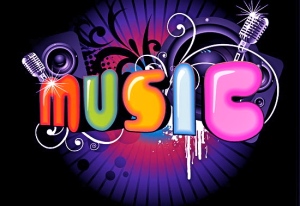 Australia has a rich heritage of wonderful music to share. Some of their artists have been important and well-loved within their own borders, but many more have become famous around the world. Please visit Wikipedia -Australian Music to learn more and for an extensive list of famous Australian musicians. You’ll be amazed at the many names you recognize. I asked my daughter to find just a few artists she enjoys from Western Australia (WA) and New South Wales (NSW). With so many to choose from, she said it was almost impossible! But she did it, so here they are. We hope you enjoy them too!
Australia has a rich heritage of wonderful music to share. Some of their artists have been important and well-loved within their own borders, but many more have become famous around the world. Please visit Wikipedia -Australian Music to learn more and for an extensive list of famous Australian musicians. You’ll be amazed at the many names you recognize. I asked my daughter to find just a few artists she enjoys from Western Australia (WA) and New South Wales (NSW). With so many to choose from, she said it was almost impossible! But she did it, so here they are. We hope you enjoy them too!
Slim Dusty (David Gordon Kirkpatrick) who was born in 1927 in Kempsey, NSW, the son of a cattle farmer. Slim Dusty, was a beloved Country (not Country and Western) artist who made the song “Waltzing Matilda” famous in 1962. Lyrics for Waltzing Matilda were written in 1895 by Australian bush poet Banjo Paterson, also known for writing “The Man From Snowy River”. The song is often referred to as the unofficial national anthem of Australia. (from YouTube: thanks to bobby14place for a great scene from the movie The Man From Snowy River and thanks to sheelaghm for Slim Dusty’s video):
The Easybeats, who originated in Sydney, NSW, had a short career from 1964 to 1969, but are regarded as the greatest Australian pop band of the 1960’s and in 1966 they were the first Australian act to have an international pop hit with “Friday On My Mind” (thanks to Paul Henrique on YouTube)
INXS although no longer performing, are probably the most well-known band in Australia, along with AC/DC of course. INXS had strong ties to Perth, WA where the musical Farriss brothers (Tim, Andrew & Jon) grew up, and then later to Sydney, NSW where The Farriss Brothers band was formed in 1977. They gained three more band members (singer Michael Hutchence, Kirk Pengilly and Garry Gary Beers), changed their name and became known, and world famous, as INXS. They even have a special tie to Canada! Sadly, Michael passed away in 1997, but later, in 2005, the remaining band members held a televised international audition / competition for a new lead singer and chose JD Fortune (hailing from Nova Scotia.) My daughter and I like to think we helped him get there by voting for him each week until the band chose him from a large field of competitors. Here is quite possibly my daughter’s favourite song by the band, with vocals by Michael, performed live at Wembley Stadium in London England 1991 before a crowd of 74,000 – “Never Tear Us Apart” (thanks to buenasvidas on YouTube)
Eskimo Joe is a highly successful alternative rock band formed in 1997 in Perth, WA. and is another favourite band of my daughter. They are winners of 8 ARIA awards, with their first album earning AUS Gold, second 2x Platinum, third 4x Platinum and fourth Gold. This is the title track from their multi award-winning 2006 album “Black Fingernails, Red Wine” (thanks to umerad on YouTube)
This is a beautiful video showing amazing Australian Outback scenery and Aboriginal artwork, highlighting Aboriginal indigenous music and their most unusual instrument, the Didgeridoo. The “Outback” is a vast, remote and arid area of Australia which encompasses parts of many of its States, including WA and NSW (thanks to warrio61936 on YouTube):
Performed at the amazing Sydney Opera House in NSW, here are some highlights of Opera Australia’s 2014 production of La Boheme featuring Taryn Fiebig (thanks to operaaustralia on YouTube)
Paws For Awhile
 A famous resident of Pilbara, Western Australia, was a beloved, four-legged legend called “Red Dog”.
A famous resident of Pilbara, Western Australia, was a beloved, four-legged legend called “Red Dog”.
 A statue and plaque were erected in his memory in Dampier WA, one of the towns which this well-travelled dog frequented. His life (1971-1979) was a heartwarming, as well as tragic, tale which you can read about in Nancy Gillespie’s 1983 short story, Louis de Bernierses’ 2002 novel or watch in the 2011 film – all with the title “Red Dog”. I just know you’ll want to see “Red Dog” the movie after watching this trailer. This has been but a very small taste of the wonders of OZ. I’ve barely touched the surface of all that can be seen, heard and written about this wonderful land. We have family friends who are blessed to be living in northern Queensland along the tropical coastline, so rest assured, I plan to explore that State as well as other parts of the country in future posts. For now, G’day mates! Good on ya! …ej
A statue and plaque were erected in his memory in Dampier WA, one of the towns which this well-travelled dog frequented. His life (1971-1979) was a heartwarming, as well as tragic, tale which you can read about in Nancy Gillespie’s 1983 short story, Louis de Bernierses’ 2002 novel or watch in the 2011 film – all with the title “Red Dog”. I just know you’ll want to see “Red Dog” the movie after watching this trailer. This has been but a very small taste of the wonders of OZ. I’ve barely touched the surface of all that can be seen, heard and written about this wonderful land. We have family friends who are blessed to be living in northern Queensland along the tropical coastline, so rest assured, I plan to explore that State as well as other parts of the country in future posts. For now, G’day mates! Good on ya! …ej

